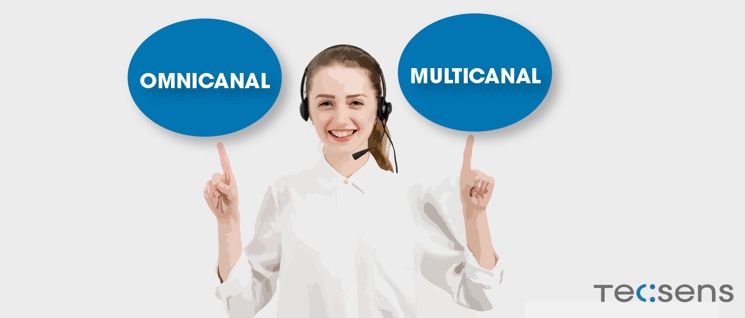The Contact Center sector continues to rise, as stated by the CEX Association (Association of Customer Experience Companies) which estimates that they represent more than 85% of the sector in Spain.
The foundation of every company is the customer service and the customer experience. Hence the great dilemma, which is that the question is repeated over and over again, what is the best channel to offer the best experience to your customers?
Above all, the voice remains the protagonist and the human warmth of a conversation is what can really manage to close a sale or solve a question or incident. But when we add other ways of communicating with the customer, we give you all the options adapting to it and therefore making it easy.
But this increase and diversity of channels and channels of communication continues to create confusion between the differences in terms:
Multichannel and Omnichannelity:
Many wonder where the real difference lies and what they have to rely on to make the right choice. What strategy should I use?
The real difference lies in the way the customer contacts, in the process of buying or experience of the same. In short, the one known as Customer Experience.
In a multichannel strategy there are several communication channels that are disintegrated. Using multiple channels without a studied and proven strategy can lead to significant problems for the company, such as customer dissatisfaction and anger. Adding a channel list to care processes is not enough.
However, an omnichannel strategy is to design strategies that leverage technology to integrate these communication channels into a homogeneous experience, in order to adapt to the demands of modern users and offer the best service. It no longer matters from where (call, whatsapp, chat, email, RRSS,…) what matters is how.
Choosing the best ally to achieve this, in the vast majority of cases will make a difference and make the goal, that the customer is always the central axis (customer centricity).
More doubts?
Some of the benefits:
- Different channels but, a single experience
- Total availability and intelligent tracking
- Real-time automation and feedback
- Quality of service
- Personalized attention
- Waiting time optimization
- Increased sales
- Simplification of decision-making
In short, it is the customer who decides how to contact you, but when they do and receive a positive response, the rest of the way will be easier. Ensuring a homogeneous and coherent response, making the customer feel comfortable and understood, will be the key to survival, will be the SER OR NOT BE.




